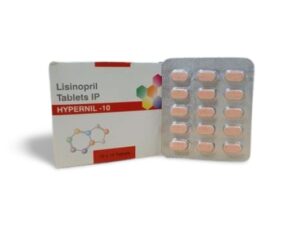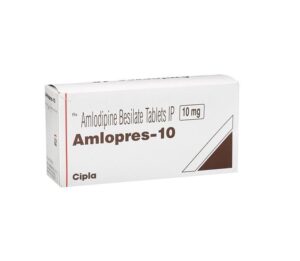What is Diovan HCT and how is it used?
Diovan HCT is a prescription medicine used to treat the symptoms of high blood pressure and as a diuretic (water pill), to prevent fluid retention. Diovan HCT may be used alone or with other medications.
Diovan HCT belongs to a class of drugs called ARB/HCTC Combos.
It is not known if Diovan HCT is safe and effective in children.
What are the possible side effects of Diovan HCT?
Diovan HCT may cause serious side effects including:
- lightheadedness,
- swelling in your hands or feet,
- rapid weight gain,
- eye pain,
- vision problems,
- skin rash,
- pounding heartbeats,
- fluttering in your chest,
- yellowing of the skin or eyes (jaundice)
- dry mouth,
- increased thirst,
- drowsiness,
- confusion,
- feeling restless,
- vomiting,
- muscle pain,
- lack of energy,
- fast heartbeats,
- little or no urine, and
- convulsions (seizures)
Get medical help right away, if you have any of the symptoms listed above.
The most common side effects of Diovan HCT include:
- dizziness, and
- headache
Tell the doctor if you have any side effect that bothers you or that does not go away.
INDICATIONS
Diovan HCT (valsartan and hydrochlorothiazide, USP) is indicated for the treatment of hypertension, to lower blood pressure. Lowering blood pressure reduces the risk of fatal and nonfatal cardiovascular events, primarily strokes and myocardial infarctions. These benefits have been seen in controlled trials of antihypertensive drugs from a wide variety of pharmacologic classes, including hydrochlorothiazide and the ARB class to which valsartan principally belongs. There are no controlled trials demonstrating risk reduction with Diovan HCT.
Control of high blood pressure should be part of comprehensive cardiovascular risk management, including, as appropriate, lipid control, diabetes management, antithrombotic therapy, smoking cessation, exercise, and limited sodium intake. Many patients will require more than 1 drug to achieve blood pressure goals. For specific advice on goals and management, see published guidelines, such as those of the National High Blood Pressure Education Program’s Joint National Committee on Prevention, Detection, Evaluation, and Treatment of High Blood Pressure (JNC).
Numerous antihypertensive drugs, from a variety of pharmacologic classes and with different mechanisms of action, have been shown in randomized controlled trials to reduce cardiovascular morbidity and mortality, and it can be concluded that it is blood pressure reduction, and not some other pharmacologic property of the drugs, that is largely responsible for those benefits. The largest and most consistent cardiovascular outcome benefit has been a reduction in the risk of stroke, but reductions in myocardial infarction and cardiovascular mortality have also been seen regularly.
Elevated systolic or diastolic pressure causes increased cardiovascular risk, and the absolute risk increase per mmHg is greater at higher blood pressures, so that even modest reductions of severe hypertension can provide substantial benefit. Relative risk reduction from blood pressure reduction is similar across populations with varying absolute risk, so the absolute benefit is greater in patients who are at higher risk independent of their hypertension (e.g., patients with diabetes or hyperlipidemia), and such patients would be expected to benefit from more aggressive treatment to a lower blood pressure goal.
Some antihypertensive drugs have smaller blood pressure effects (as monotherapy) in black patients, and many antihypertensive drugs have additional approved indications and effects (e.g., on angina, heart failure, or diabetic kidney disease). These considerations may guide selection of therapy.
Add-On Therapy
Diovan HCT may be used in patients whose blood pressure is not adequately controlled on monotherapy.
Sections or subsections omitted from the full prescribing information are not listed.
Replacement Therapy
Diovan HCT may be substituted for the titrated components.
Initial Therapy
Diovan HCT may be used as initial therapy in patients who are likely to need multiple drugs to achieve blood pressure goals.
The choice of Diovan HCT as initial therapy for hypertension should be based on an assessment of potential benefits and risks.
Patients with stage 2 hypertension are at a relatively high risk for cardiovascular events (such as strokes, heart attacks, and heart failure), kidney failure, and vision problems, so prompt treatment is clinically relevant. The decision to use a combination as initial therapy should be individualized and should be shaped by considerations such as baseline blood pressure, the target goal, and the incremental likelihood of achieving goal with a combination compared to monotherapy. Individual blood pressure goals may vary based upon the patient’s risk.
Data from the high dose multifactorial trial . provides estimates of the probability of reaching a target blood pressure with Diovan HCT compared to valsartan or hydrochlorothiazide monotherapy. The figures below provide estimates of the likelihood of achieving systolic or diastolic blood pressure control with Diovan HCT 320/25 mg, based upon baseline systolic or diastolic blood pressure. The curve of each treatment group was estimated by logistic regression modeling. The estimated likelihood at the right tail of each curve is less reliable due to small numbers of subjects with high baseline blood pressures.
DOSAGE AND ADMINISTRATION
General Considerations
The usual starting dose is Diovan HCT 160/12.5 mg once daily. The dosage can be increased after 1 to 2 weeks of therapy to a maximum of one 320/25 tablet once daily as needed to control blood pressure [see Clinical Studies]. Maximum antihypertensive effects are attained within 2 to 4 weeks after a change in dose.
Add-On Therapy
A patient whose blood pressure is not adequately controlled with valsartan (or another ARB) alone or hydrochlorothiazide alone may be switched to combination therapy with Diovan HCT.
A patient who experiences dose-limiting adverse reactions on either component alone may be switched to Diovan HCT containing a lower dose of that component in combination with the other to achieve similar blood pressure reductions. The clinical response to Diovan HCT should be subsequently evaluated and if blood pressure remains uncontrolled after 3 to 4 weeks of therapy, the dose may be titrated up to a maximum of 320/25 mg.
Replacement Therapy
Diovan HCT may be substituted for the titrated components.
Initial Therapy
Diovan HCT is not recommended as initial therapy in patients with intravascular volume depletion [see WARNINGS AND PRECAUTIONS].
Use With Other Antihypertensive Drugs
Diovan HCT may be administered with other antihypertensive agents.
HOW SUPPLIED
Dosage Forms And Strengths
80/12.5 mg tablets, imprinted CG/HGH (Side 1/Side 2)
160/12.5 mg tablets, imprinted CG/HHH
160/25 mg tablets, imprinted NVR/HXH
320/12.5 mg tablets, imprinted NVR/HIL
320/25 mg tablets, imprinted NVR/CTI
Storage And Handling
Diovan HCT (valsartan and hydrochlorothiazide, USP) is available as non-scored tablets containing valsartan/hydrochlorothiazide 80/12.5 mg, 160/12.5 mg, 160/25 mg, 320/12.5 mg, and 320/25 mg. Strengths are available as follows.
80/12.5 mg Tablet – Light orange, ovaloid, with slightly convex faces debossed CG on 1 side and HGH on the other side.
Bottles of 90 NDC 0078-0314-34
160/12.5 mg Tablet – Dark red, ovaloid, with slightly convex faces debossed CG on 1 side and HHH on the other side.
Bottles of 90 NDC 0078-0315-34
Unit Dose (blister pack of 30) NDC 0078-0315-15
160/25 mg Tablet – Brown orange, ovaloid, with slightly convex faces debossed NVR on 1 side and HXH on the other side.
Bottles of 90 NDC 0078-0383-34
Unit Dose (blister pack of 30) NDC 0078-0383-15
320/12.5 mg Tablet – Pink, ovaloid, with beveled edge, debossed NVR on 1 side and HIL on the other side.
Bottles of 90 NDC 0078-0471-34
Unit Dose (blister pack of 30) NDC 0078-0471-15
320/25 mg Tablet – Yellow, ovaloid, with beveled edge, debossed NVR on 1 side and CTI on the other side.
Bottles of 90 NDC 0078-0472-34
Unit Dose (blister pack of 30) NDC 0078-0472-15
Store at 25°C (77°F); excursions permitted to 15-30°C (59-86°F) .
Protect from moisture.
Dispense in tight container (USP).







Reviews
There are no reviews yet.